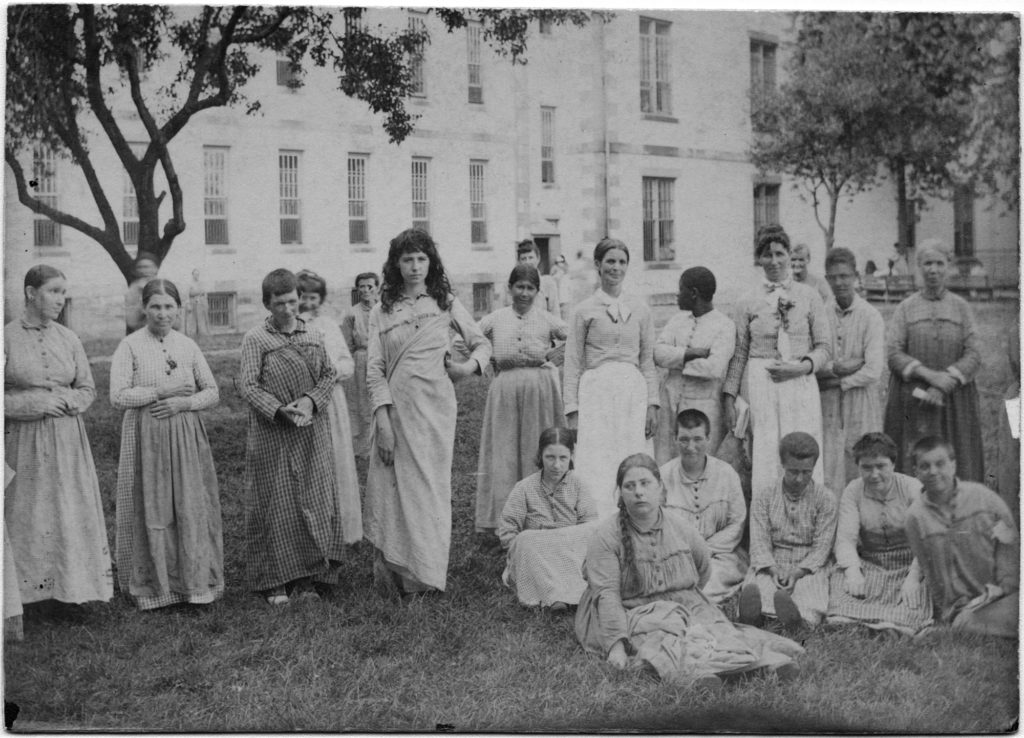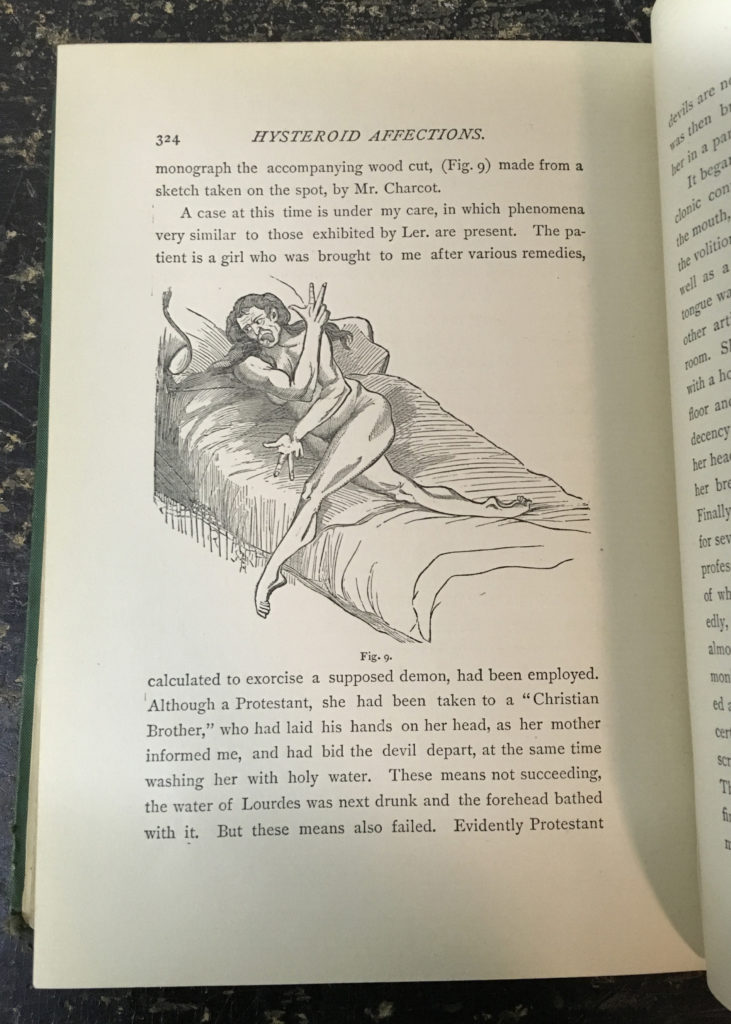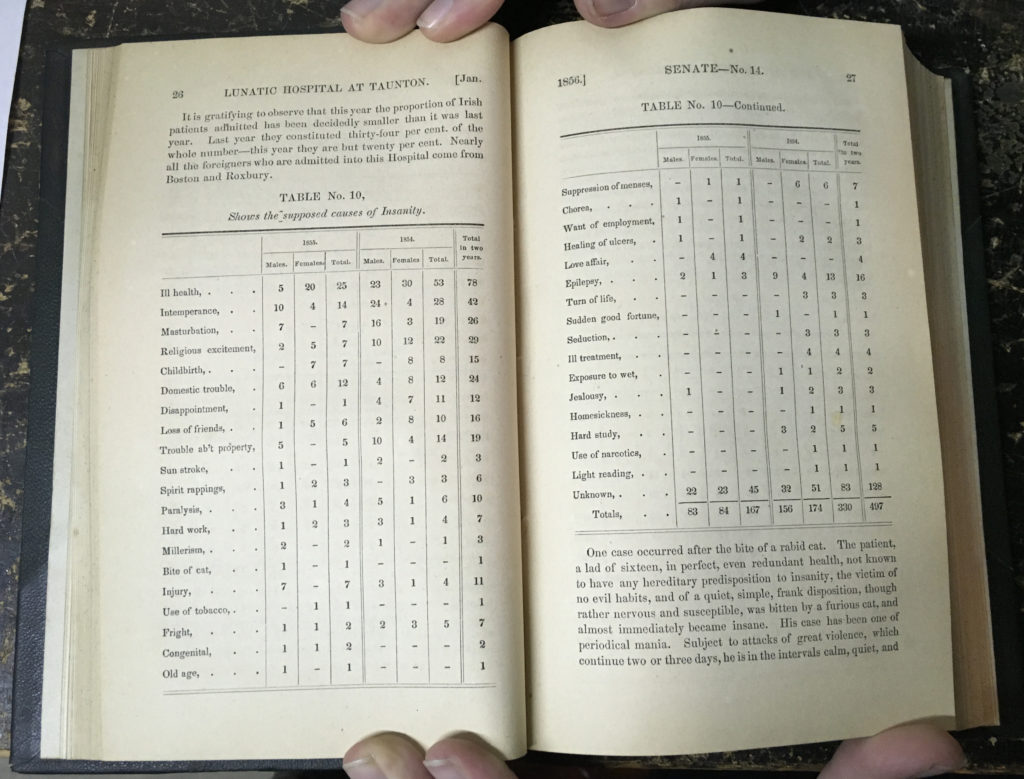– by Drew Campbell, Archives intern
This semester, I began my junior year at the University of the Sciences. After I made my schedule for the semester, I realized how much time I had after my classes ended for the day. I wanted to find an internship opportunity because I have always been able to learn more from working than from sitting in a classroom. As a student in a university environment where science is the main focus, I wanted to spend some time not in a lab, but with history.
I remembered my sophomore year, when I was assigned to do a paper about the Mütter Museum, and had reached out to the Historical Medical Library for information about the founding of the College of Physicians of Philadelphia and the Mütter. I looked on the website and saw that the College of Physicians did take interns, so I looked back into my emails, and found the correspondence that I had with the Library. It must have seemed completely random for the Archivist to receive an email about a business student looking to work in the library, but fortunately she gave me a chance! I mentioned this internship opportunity to the humanities department at my school, and received an unexpected amount of encouragement from them to pursue this unique opportunity. After some emails back and forth between the school and the library, I got the internship (while also getting class credit!).
Previously, I worked in an archives at the New Jersey State Police Museum, and loved the experience there. When I was there I worked on researching the Lindbergh kidnapping, so this helped me learn how to do research with special collections materials, but the Historical Medical Library has been around since 1788, and the State Police Museum has information that dates back only to its founding in 1921. The vastness of the Library absolutely blew me away; the first time I saw “the stacks” – the seven-floor portion of the building where all of the books are stored – it made me feel like I had stepped into the library from Harry Potter. The books in the stacks date from modern day back to the year 1220. Being able to see some of these works which predate me by 776 years was something that I will never forget. My internship project was to use the Library’s historical collection to curate a pop-up exhibit for its Archives Month Philly event. The exhibit was called “Invisible, not Insignificant,” and it was to highlight the “invisible” conditions such as depression, and explore life in the asylums during the late 19th and early 20th century.

When I first got this assignment, it was rather overwhelming. Mental health and asylums are such broad subjects, and especially with the materials that the Library has, it would take years to read everything. I was given a list of possible materials for the exhibit, so I went through the catalog and requested books, photos, and pamphlets. When my cart was full of books, I finally sat down to read. Some books did not fit for what I had in mind for the exhibit, while others were perfect. The difficult part was actually going through and reading every page of every book, so I wouldn’t miss anything of importance. Some of the 19th-century authors had writing styles that were very confusing with their mix of colloquial words and now-outdated medical terminology. However, some books were amazing to read. Hearing the professional diagnoses on the causes of insanity was actually enlightening. I expected to read in these books that spirits were invading the brain, or that the devil had placed a spell onto someone; however, I was met with an unexpected level of science. Many of the doctors believed that forms of insanity or intemperance were most likely caused by familial aspects, or what we would call genetics today. The doctors wrote about treating the patients kindly, understanding that the patients are not in full control of what is going on in their mind.

Although the doctors recommended kindness and healing therapies, the treatments that were used would be considered barbaric today. The circulating swing, the Utica crib, the use of emetics, bloodletting, and ether were all considered valuable treatments for mental illnesses. The circulating swing was a barrel-like device in which the patient would be placed and rotated at great speed to induce drowsiness and vomiting. This was meant to calm the patients and force them to relax if they became hysterical. The Utica crib was a device in which a patient would be kept for long periods of time as a restraint. It was designed to keep a patient lying flat with their arms at their sides as a way of restraining them without having to bind or chain them. Looking at these devices and seeing how they affected a person, it is easy to assume what was going through the mind of the person who invented it. However, being able to view these devices from the physicians’ points of view really changed how I saw 19th-century asylums as a whole.

After reading all of these books it made me think differently about what I’ve read about asylums for years. Doctors are often portrayed as maniacs, experimenting on those in the asylums, and generally wanting to cause harm. Working on this exhibit gave me the chance to redeem some of the doctors who really did want to help their patients. Not all institutions and physicians can be defended, as some really did display the cruelty shown in television shows, and journals and books written by patients provide evidence that while living in an asylum, one did not always receive the care that was promised. This project challenged me to think differently about what I had read previously and to think about things in new ways. It would have been easy to present the asylums as they are commonly portrayed, but after seeing the doctors’ points of view I wanted to show a side of the story that I feel has been buried for decades. When presenting history to people in an exhibit, it’s important not to show just one side. History has multitudes of stories and personal experiences, and it is important to showcase exactly what different groups experienced during this time.
If any students have time during their schedules for the semester, I would absolutely recommend trying to find an internship opportunity. This internship provided some of the best days during the semester, as well as giving me the chance to see and experience things that I would have never been able to if I had remained on the campus.

